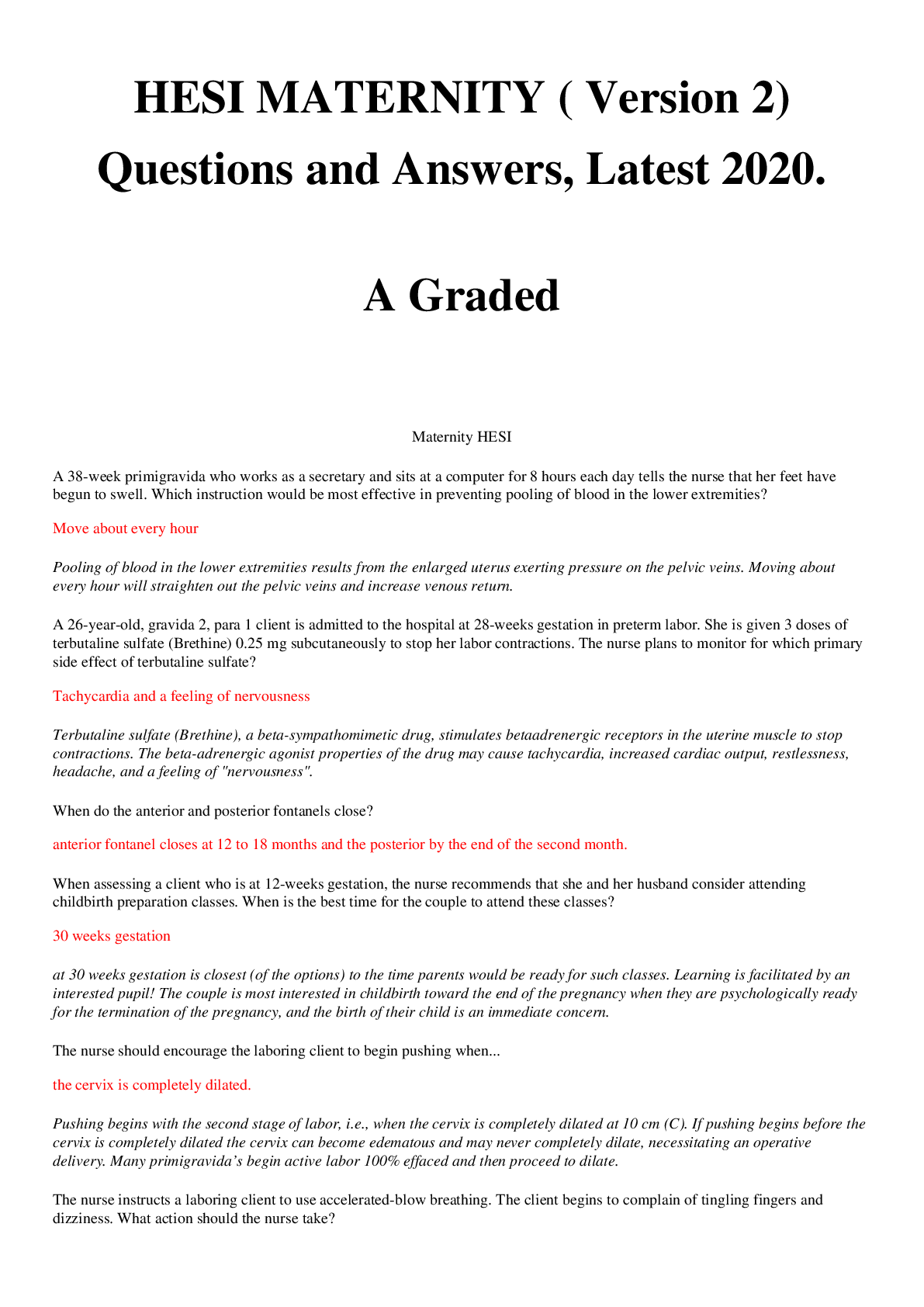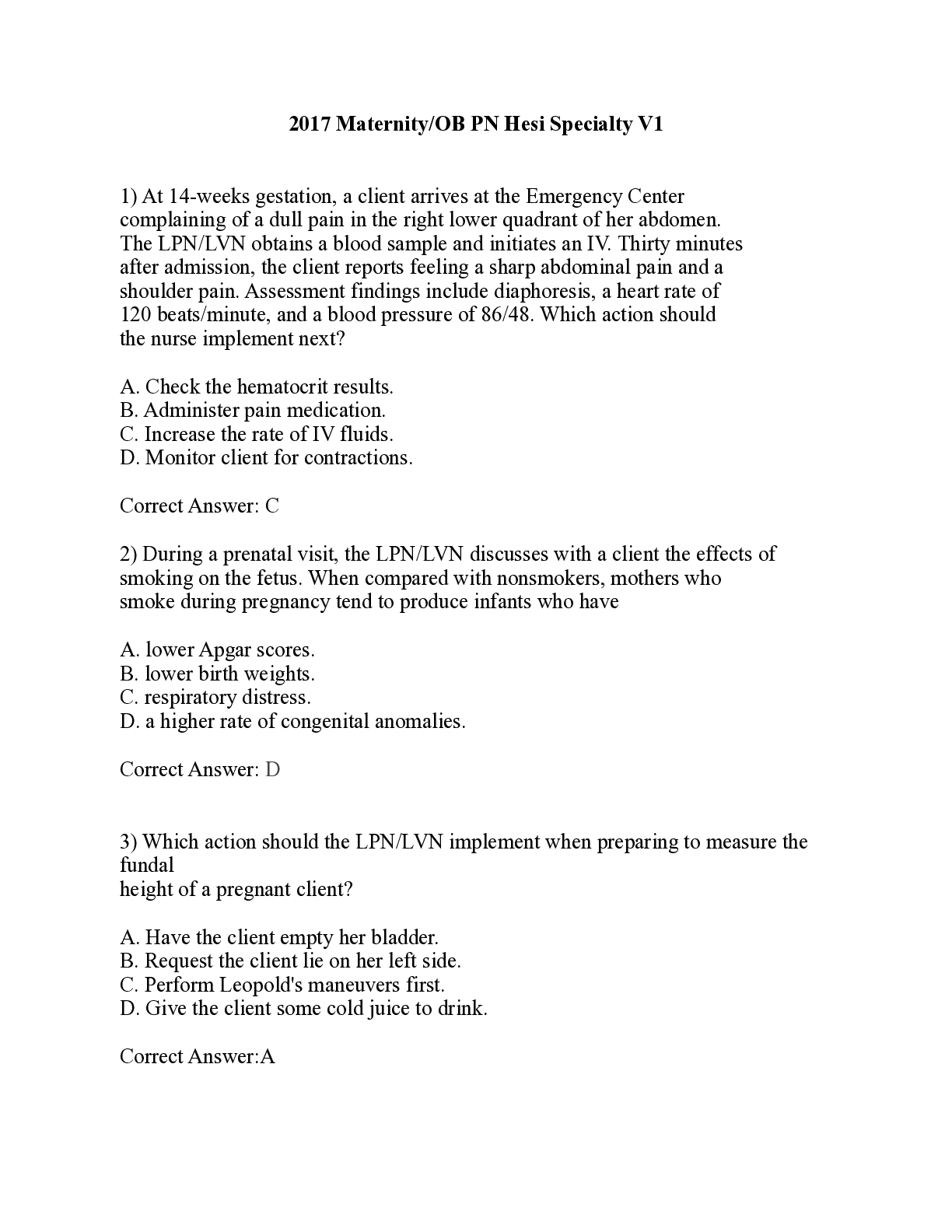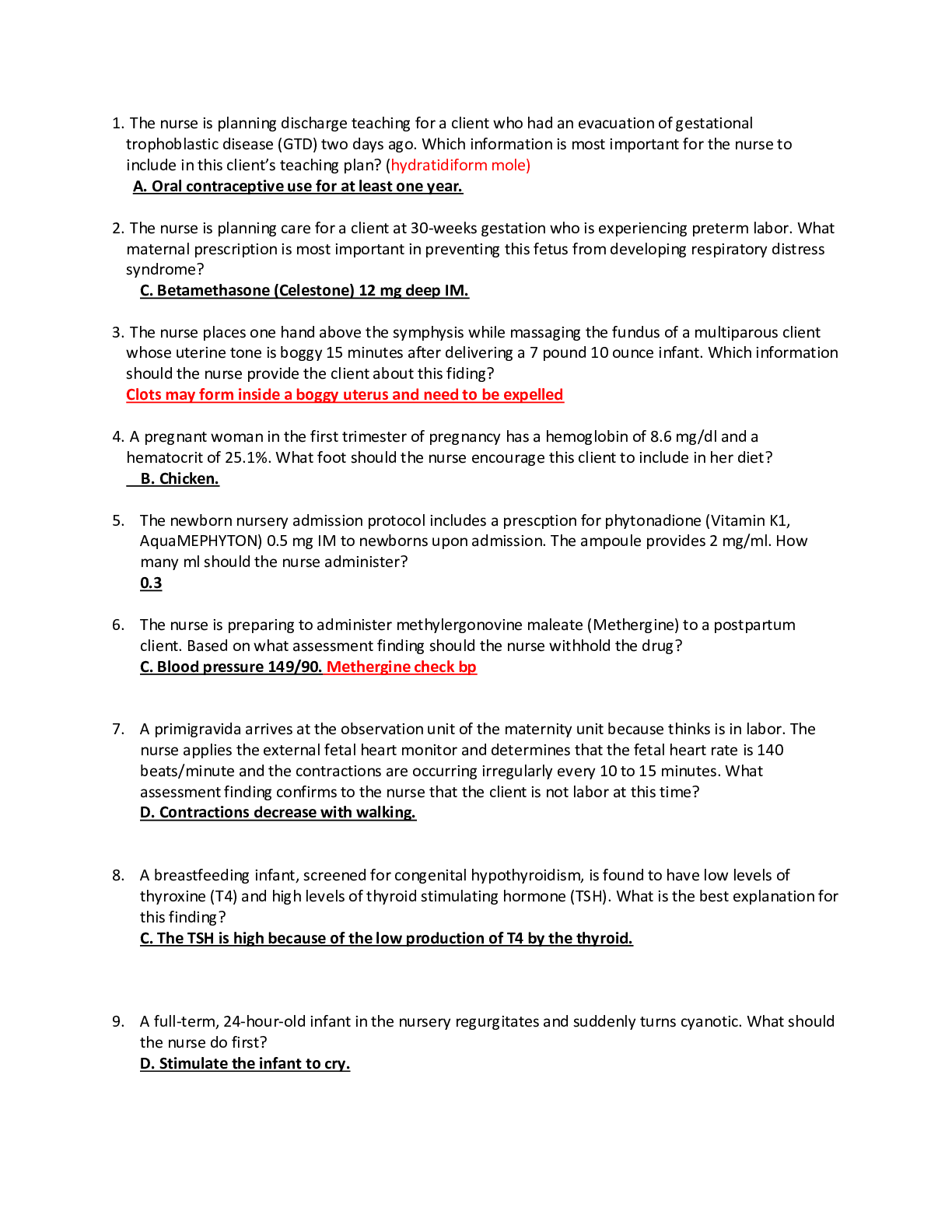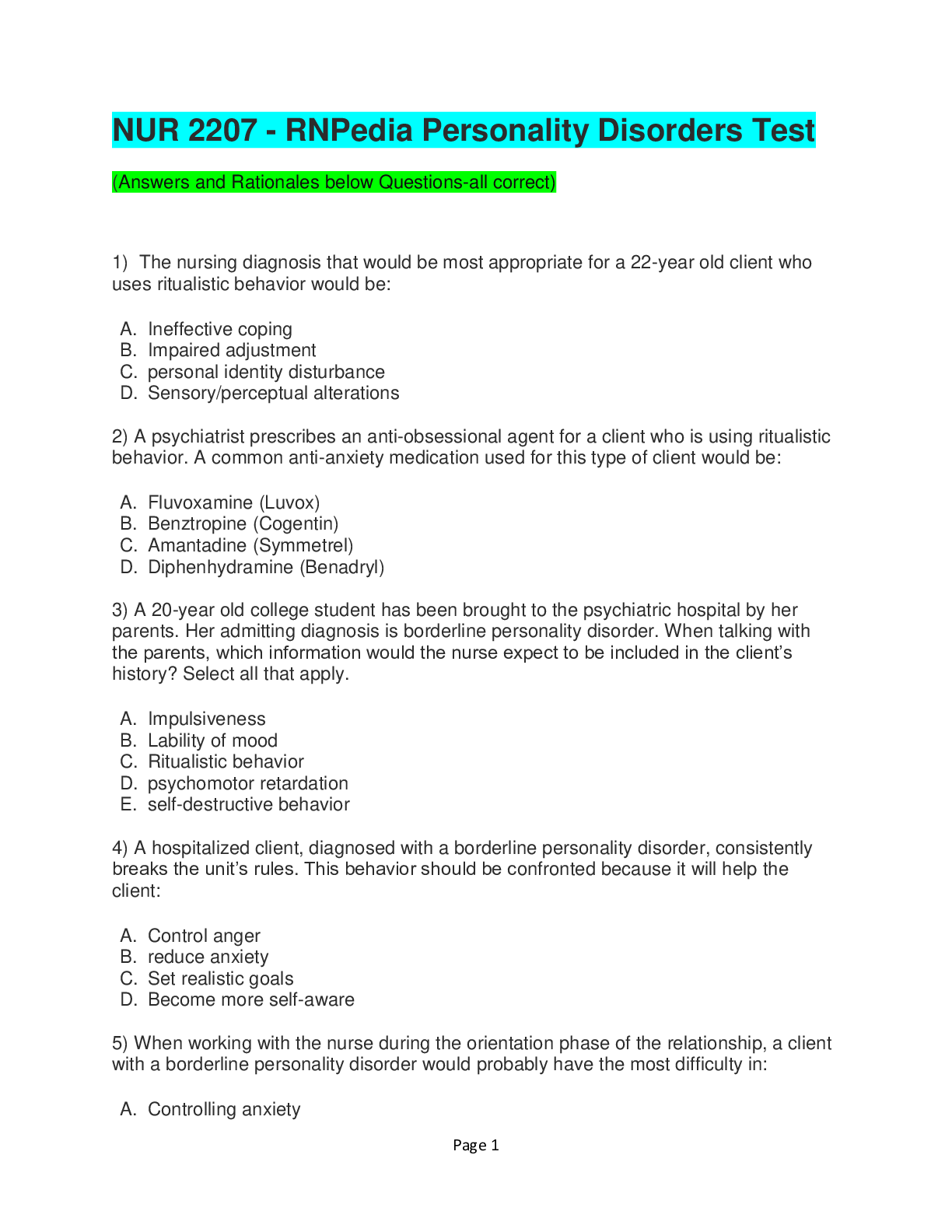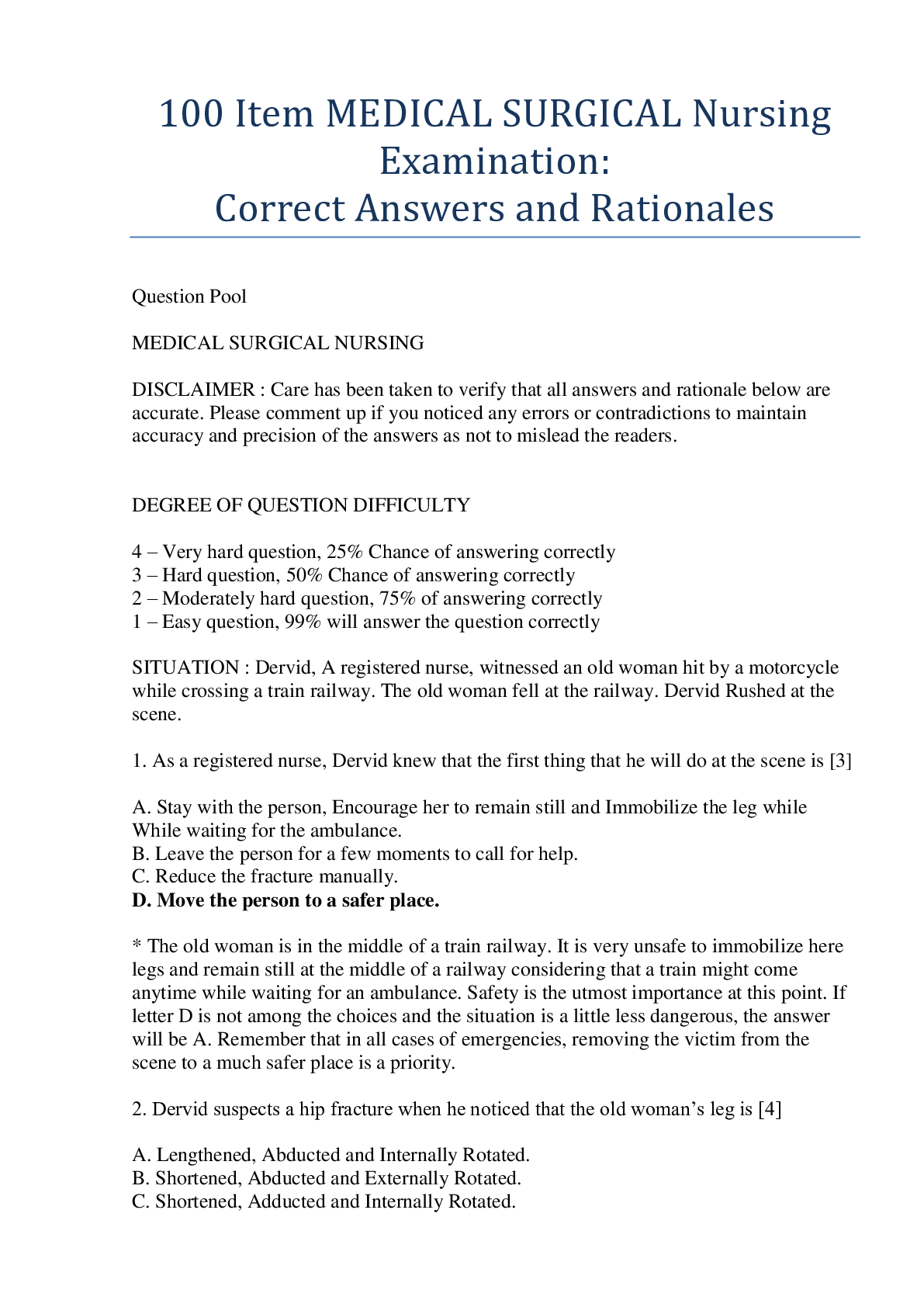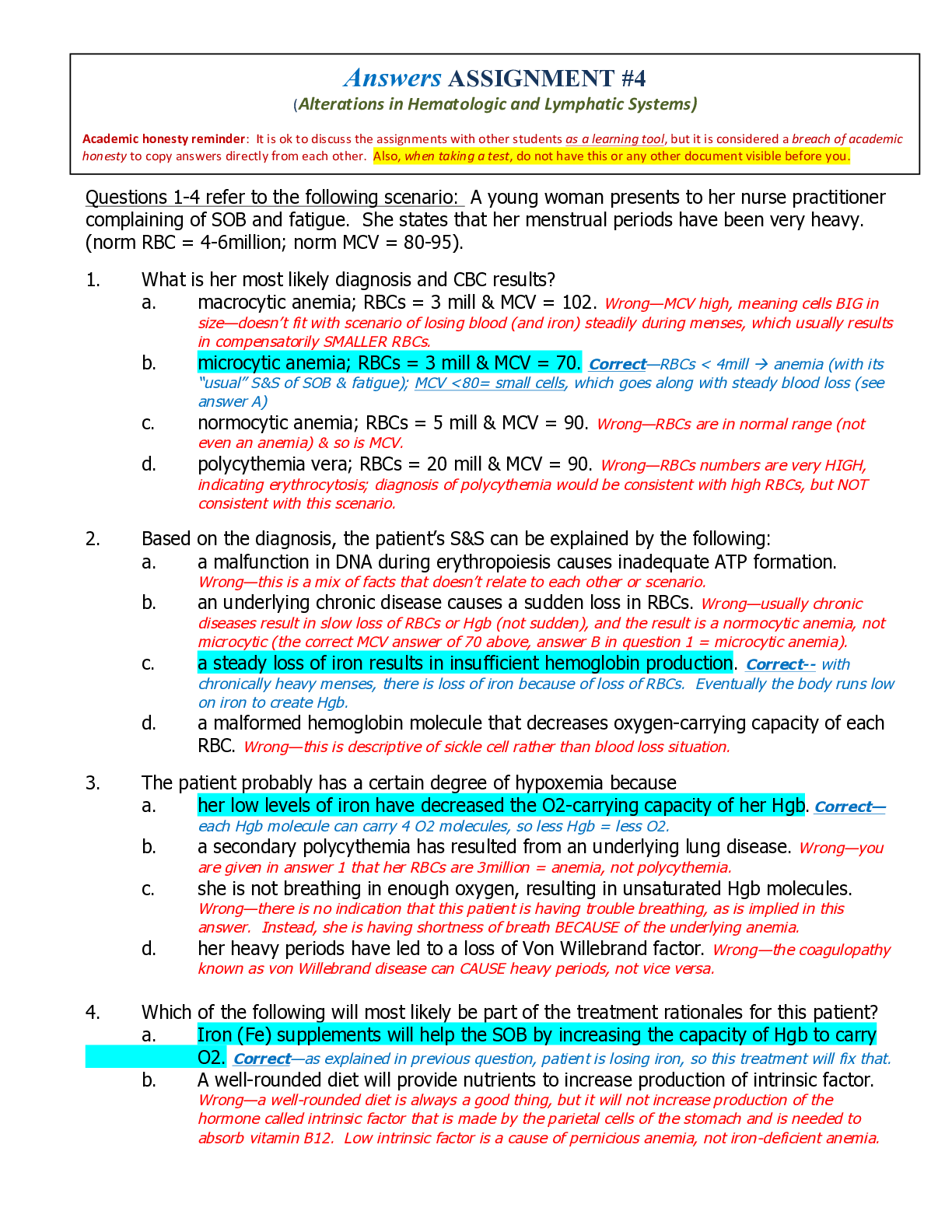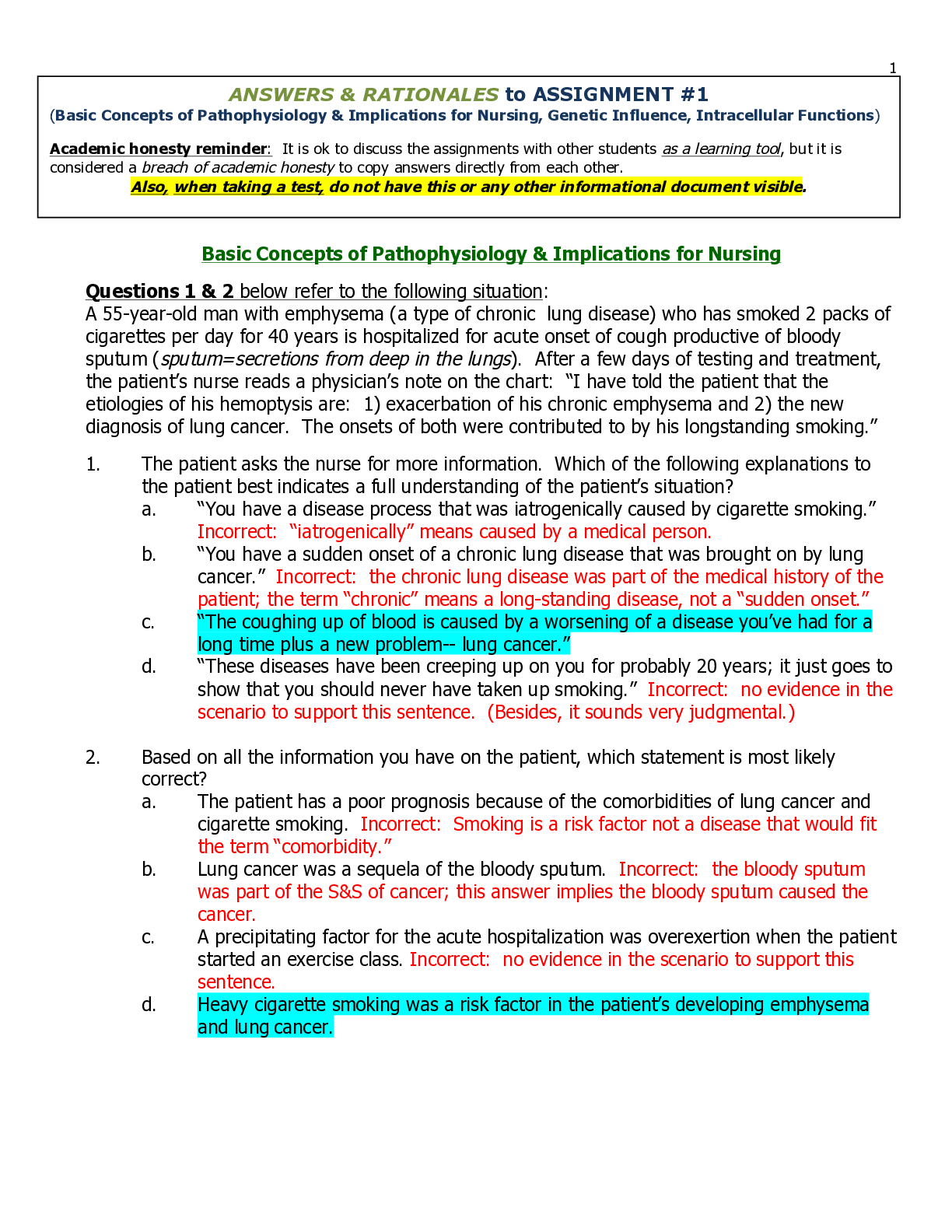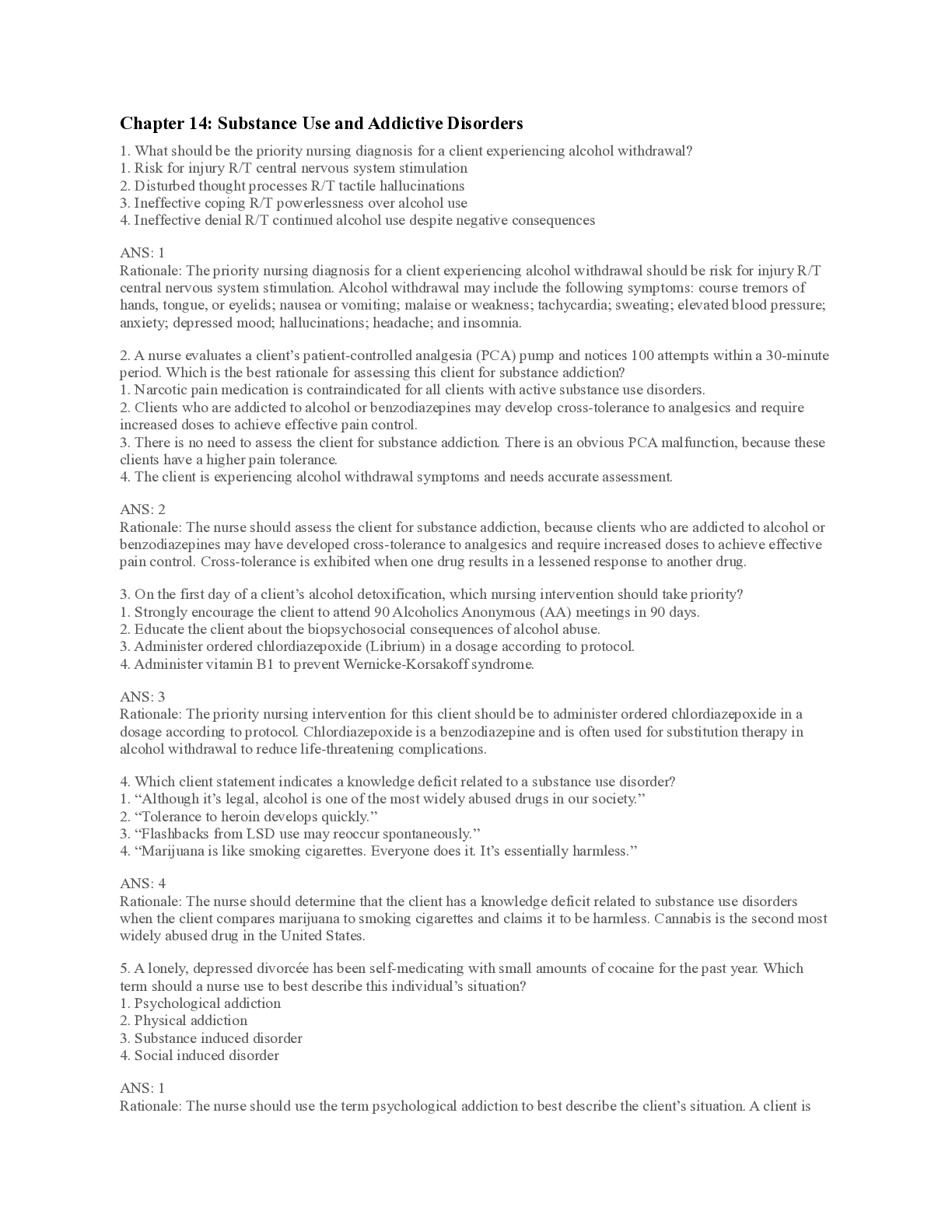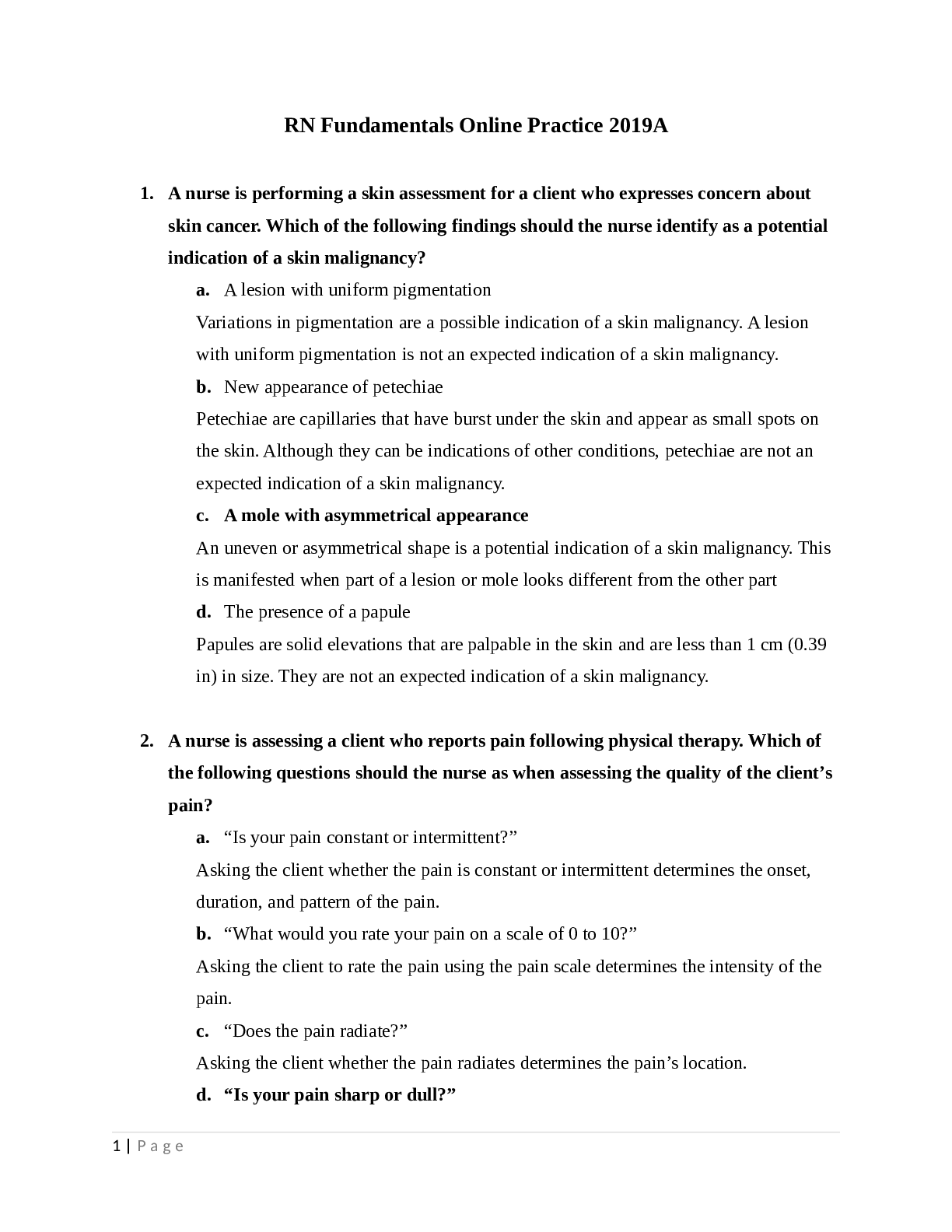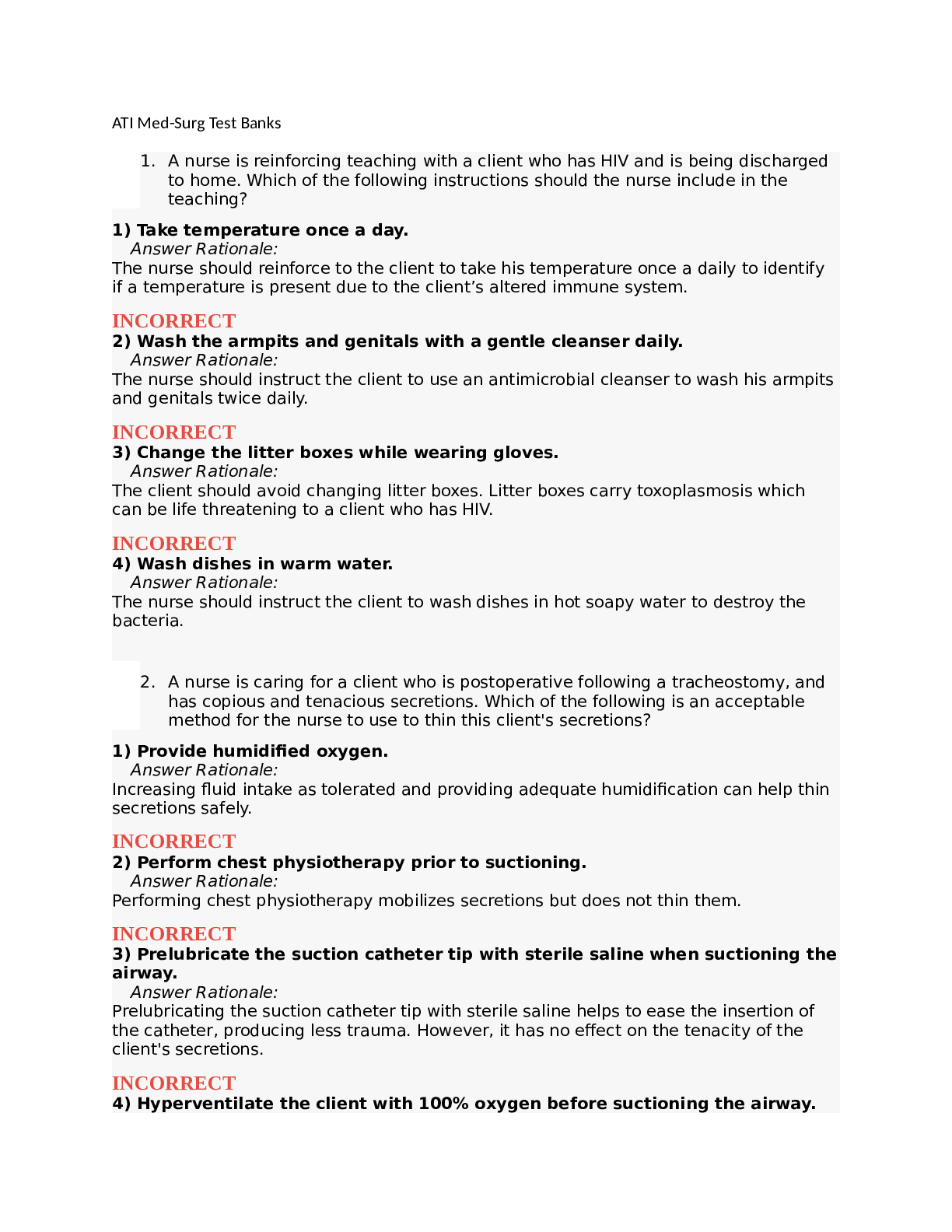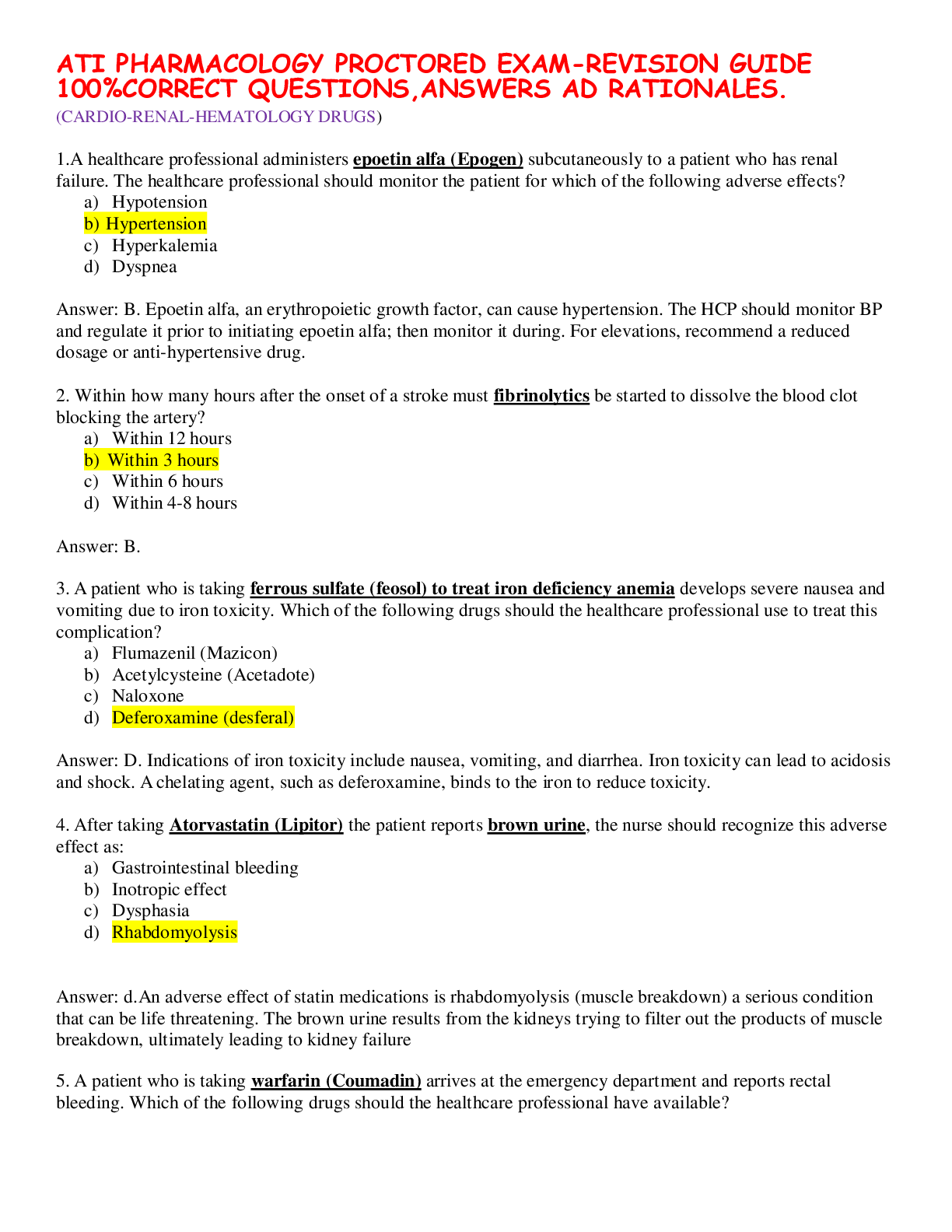NURS 3366 / NURS 3366 ANSWERS AND RATIONALES TO ASSIGNMENT 2
Document Content and Description Below
Alterations in Fluids and Electrolytes 1. Remember the patient in Assignment #1, with cancer who can’t eat and has lost 80 pounds? Let’s add to his assessment findings: let’s say he has genera... lized edema and a serum protein of 4gm/dl (normal = 6.0 to 8.3 gm/dl ). Which is the most accurate mini-concept map linking low protein with edema? a. hypoproteinemia! concentration in blood is now lower than the normal concentration of fluids inside cells! fluid goes from B to T. b. hypoproteinemia! concentration in blood is now higher than the normal concentration of fluids inside cells! fluid goes from B to T c. hypoproteinemia! blood is now hyperosmolar compared to the cells ! fluid goes from T to B d. hyperproteinemia!blood now has lower oncotic pressure than normal! fluid goes from T to B 2. All of the following are accurate possible findings in the patient above EXCEPT that a. he has confusion due swollen brain cells. b. he has crackles in his lungs from fluid in the alveoli (lung tissue). c. his serum osmolality is 302 (norm = 280- 295). d. he will need a hypertonic IV solution to return fluid status to normal. Rationales for questions 1 & 2: After something has changed the concentration status of the blood, figure out which has the higher concentration of solutes. Does blood (B) now have a higher concentration than tissue (T)? Or does T now have a higher concentration than B? Fluids will always move by the principle of osmosis TOWARDS the higher concentration, higher osmolality, higher tonicity, higher oncotic pressure, etc (all these terms have the same PRINCIPLES driving them.) Remember: CONCENTRATION CALLS! and OSMOLALITY ORDERS! In this question, proteins in the blood have diminished, so the blood has become LESS concentrated than normal, ie less concentrated than the tissues, which INITIALLY are normal concentration. But when the CHANGED blood (now HYPOproteinemic compared to the tissues NORMAL protein levels) gets to the tissue, an osmotic shift BEGINS. That shift will be that fluid will be “called in” to the higher concentration—the TISSUE in this case. So with fluid going INTO the tissues, you then develop edema, which explains the next question….“Swollen” brain cells means edema in the brain; crackles in the lungs means edema in the lung tissue; a hypertonic IV is appropriate to help REVERSE edema (this treatment will quickly change the blood concentration to hypertonicity --B more concentrated than T now—so that water will COME OUT of cells). So, C is the OUTLIER—remember, this is an EXCEPT question, so C, with its HIGH osmolality is the one that doesn’t fit with the rest. Summary: A, B, D all fit with this scenario and C does not, so C is the answer. 3. A 28-year-old man presents with a low blood pressure due to blood loss from a gunshot wound. The regulatory action that will best compensate for this patient’s fluid volume deficit is: a. increased action of the natriuretic peptide system. b. increased action of the RAAS. c. inhibition of renin secretion. d. conversion of aldosterone into angiotensin II. 4. As a result of the action in the previous question, all the following will occur EXCEPT: a. the patient’s body will “hang on” to fluids. b. Na+ will be retained by the kidneys. c. water excretion into the urine will increase. d. blood pressure will increase. ANSWERS & RATIONALES to ASSIGNMENT #2 (Includes Alterations in Fluids & Electrolytes, Altered Cellular and Tissue Biology; Altered Cellular Proliferation) Academic honesty reminder: It is ok to discuss the assignments with other students as a learning tool, but it is considered a breach of academic honesty to copy answers directly from each other. Also, when taking a test, do not have this or any other informational document visible. https://www.coursehero.com/file/10467086/Answers-ASSIGNMENT-2/ This study resource was shared via CourseHero.com Rationale for 3 & 4: When there is a diminished blood volume (fluid volume DEFICIT) sensed by the kidneys, they respond by secreting renin; renin stimulates the secretion of aldosterone from the adrenal cortex! aldosterone “tells” the kidneys to hang on to Na by not excreting it in the urine & instead keeping it in the blood stream! when the kidneys hang on to Na, H2O follow. As a result of hanging on to H2O in the body, urine output is DECREASED and blood volume is INCREASED. Also, renin stimulates the process of angiotensin II creation; angiotensin II constricts blood vessels in the periphery! blood volume that normally circulates out to peripheral vessels is decreased due to the constriction, so that a larger part of the blood volume can be shunted to the central areas where it is most needed—heart, lungs, kidneys. So in essence the main, most important circulatory areas have a compensatory increase in volume (and a much needed increase in blood pressure), whereas the periphery gets a decrease (that’s why this patient probably has cool & pale hands & feet). Answer 3A is wrong because the natriuretic system kicks in when the heart senses an excessive amount of volume returning to it! atrial natriuretic peptide or b-type natriuretic peptide is secreted by the heart & the kidneys respond by increasing urination, therefore reducing the fluid volume; a reduction in blood volume is NOT what this person needs! Inhibition of renin secretion (3C) is the opposite of what is needed in this case. 3D is wrong because aldosterone doesn’t convert into angiotensin II (be sure you know the basic steps of the RAAS). The explanation above should answer the “why” of questi [Show More]
Last updated: 1 year ago
Preview 1 out of 9 pages
Instant download

Buy this document to get the full access instantly
Instant Download Access after purchase
Add to cartInstant download
Reviews( 0 )
Document information
Connected school, study & course
About the document
Uploaded On
Feb 08, 2021
Number of pages
9
Written in
Additional information
This document has been written for:
Uploaded
Feb 08, 2021
Downloads
0
Views
42


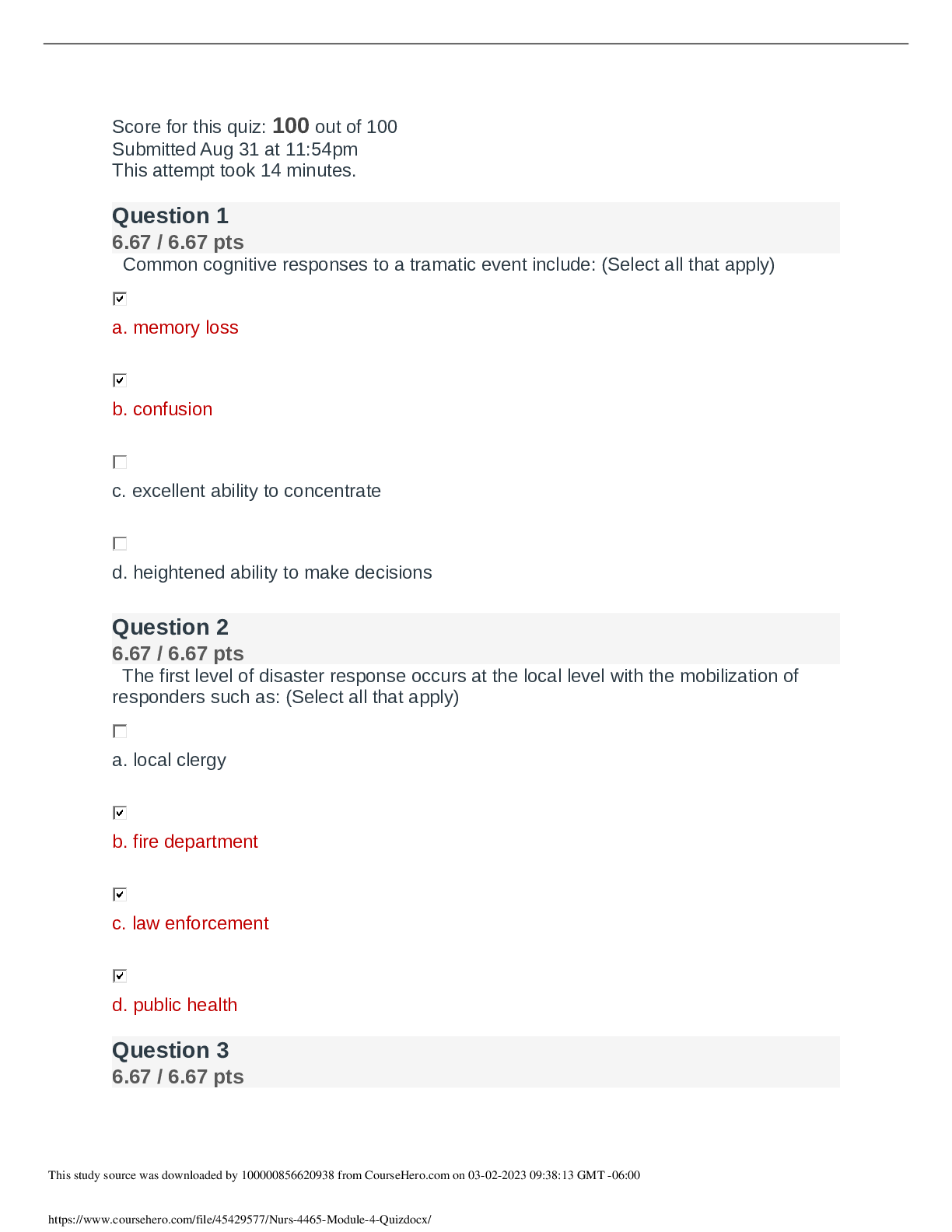
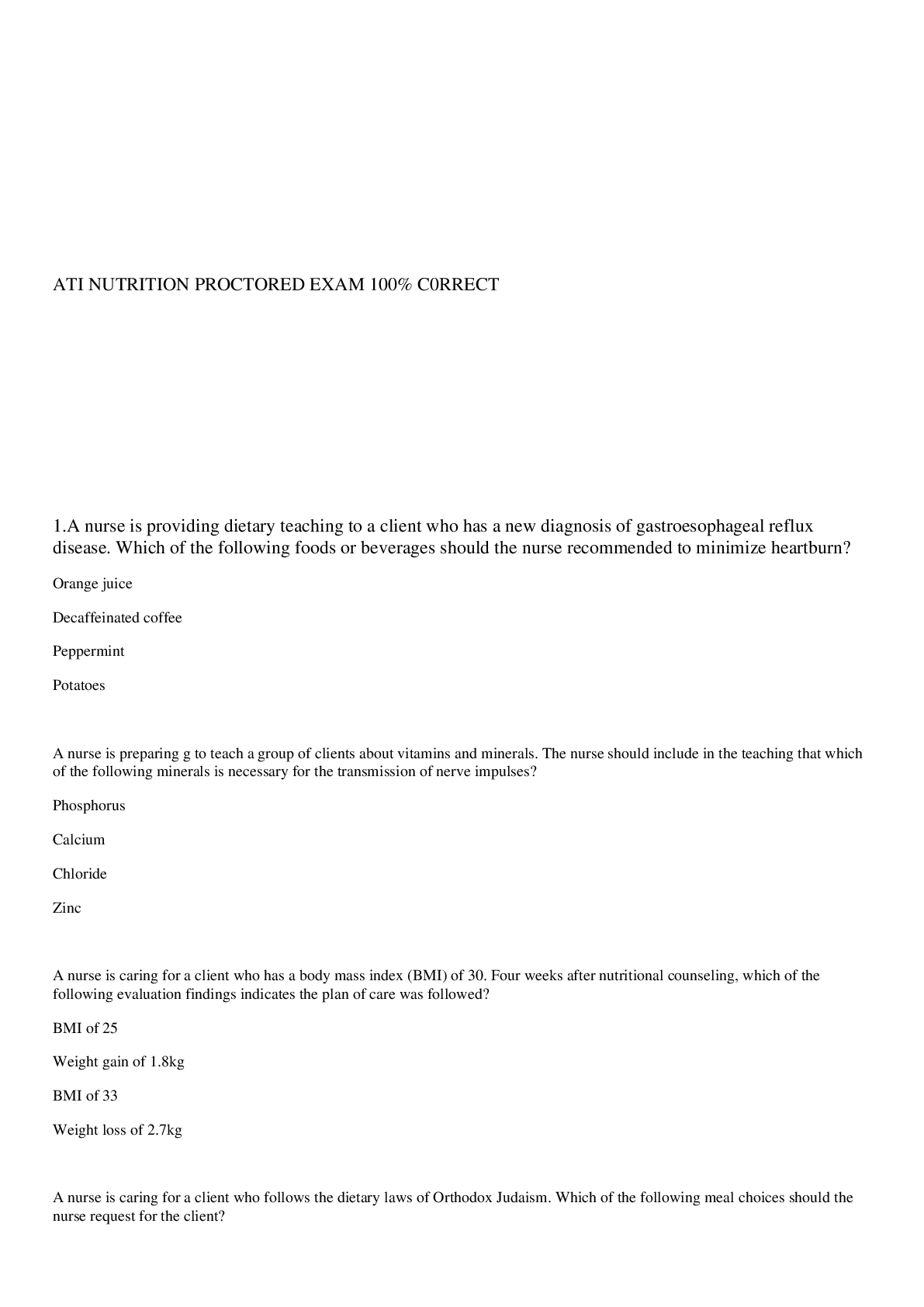
.png)
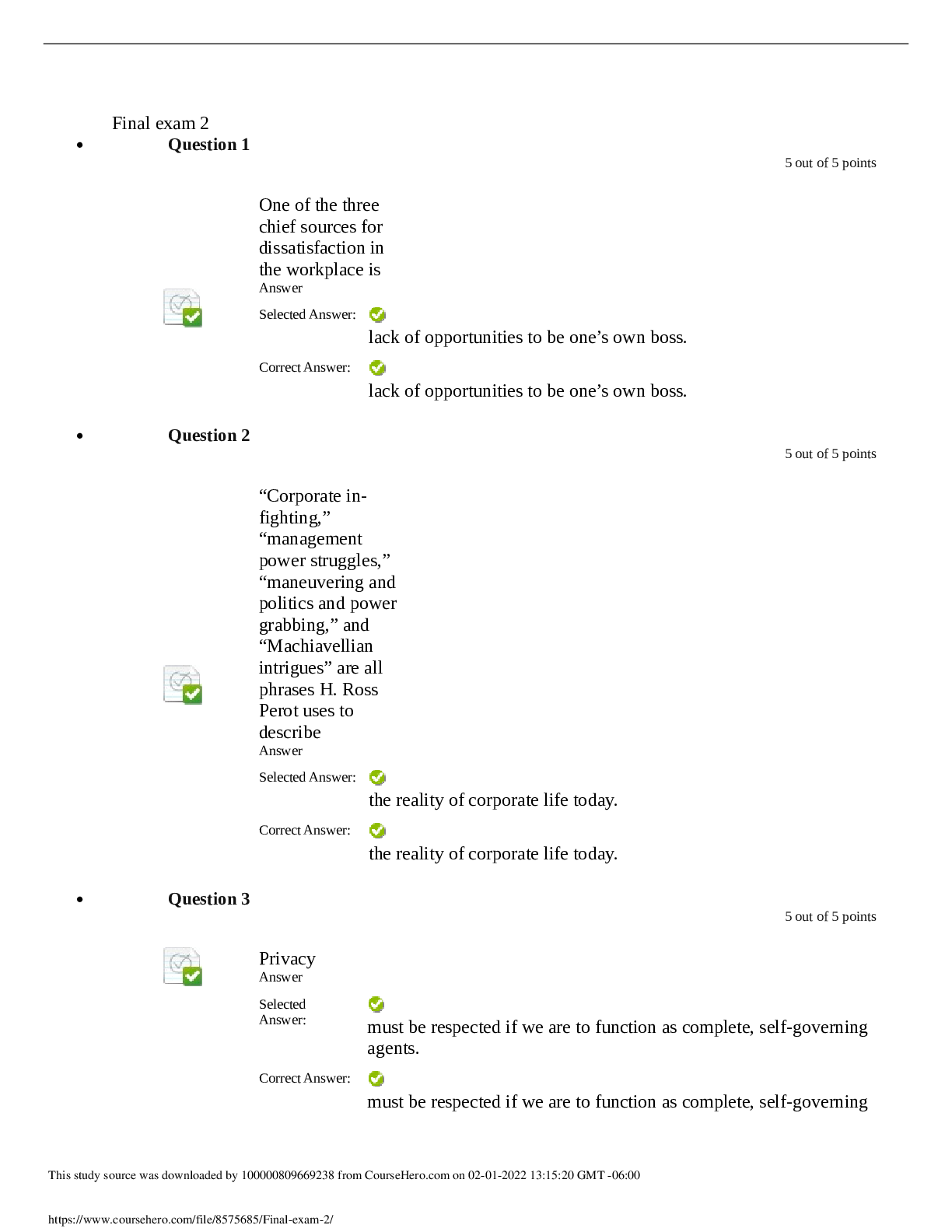
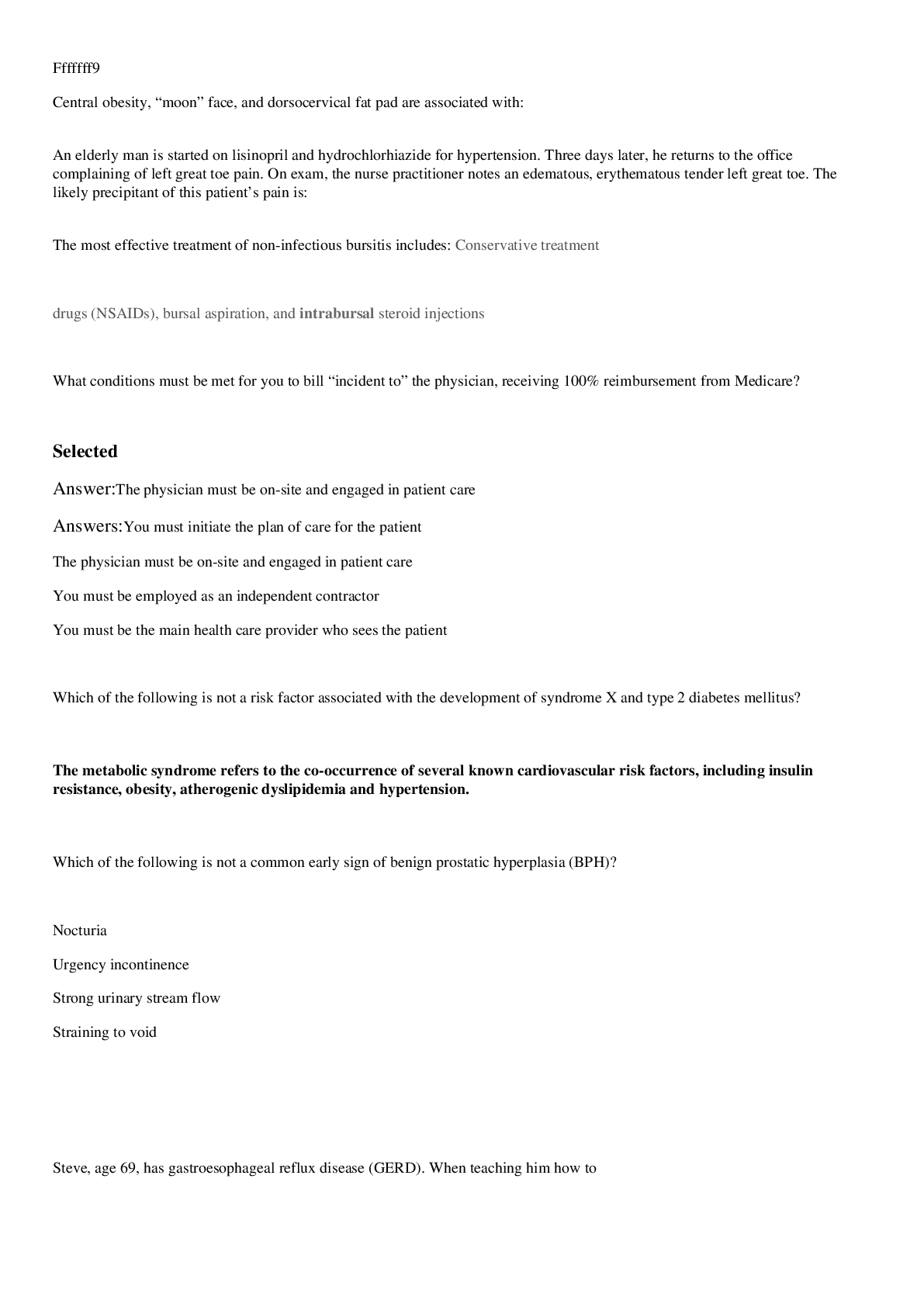

.png)
